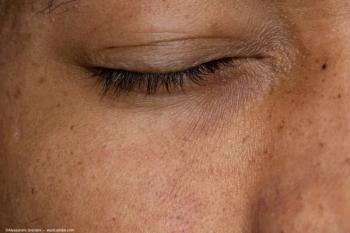
Verséa launching several products in ophthalmic space
The company is rolling out the Biovance 3L ocular tri-layer human amniotic membrane.
Video transcript
Note: This transcript has been lightly edited for clarity.
David Hutton: I'm David Hutton of Ophthalmology Times. I'm joined today by Dr. Rob Sambursky, president of Verséa Holdings, and Verséa Ophthalmics, who will provide a company update. Thanks for joining us today. Tell us about some of the latest developments and Verséa Ophthalmics.
Rob Sambursky, President, Verséa Ophthalmics: Well, first, thanks for having me. Well, this is an exciting time for Verséa Ophthalmics. We in the process of launching several products. We have a hybrid next-generation amniotic membrane, which we call the Biovance, and we have a three-layer membrane that consists of three layers of amnion. Although it's three layers, it's still only about 45 microns thick. It is very different from other amniotic membranes, because it doesn't have a ring. It has extremely good handleability, and it allows for easy placement onto the cornea.
And with that, we've been able to show that in benchtop studies compared to other graphs, it has superb, and maybe even better viability of the cells, cell adhesion and proliferation, which are the key components to allow for growth and growth factors in healing from an amniotic membrane.
And if that isn't enough, we actually have two diagnostic tests as part of our point of care lab test platform that we've launched within eyecare. And we have one test that's focused on IgE. IT helps to differentiate allergic conjunctivitis from other forms of conjunctivitis. I like to think I'm a good cornea specialist, but despite that, it is really relatively impossible to differentiate mild, allergic conjunctivitis from dry eye, and it can be really challenging to differentiate an acute allergic conjunctivitis from viral conjunctivitis. So this test will be incredibly helpful.
And at the same time, we have a lactoferrin test, a quantitative lactoferrin test that allows us to identify patients with low lactoferrin, which would suggest that the patient has an aqueous deficient dry condition. In both cases, the diagnostic lab platform allows for 10 minute tests that provide quantitative results, and not only help to provide a diagnosis that can lead to more targeted therapy, but it offers the opportunity for monitoring of a therapeutic response.
DH: Ultimately, what can some of these new developments mean for ophthalmologists and their patients?
RS: Well, I think that from a diagnostic standpoint, it's really allowing more personalized medicine. I think the more information a clinician has, the more targeted the therapy can be. And ultimately, that should be our goal to match the therapy with the condition. And then from the amniotic membrane perspective, it's part of the continuum. When we have very advanced ocular surface disease, we want to be able to apply the best possible therapeutic intervention. And in this case, we think that we have one of the best amniotic membranes to help heal those complex non healing persistent epithelial defects that you see with advanced ocular surface disease.
Newsletter
Don’t miss out—get Ophthalmology Times updates on the latest clinical advancements and expert interviews, straight to your inbox.















































.png)


